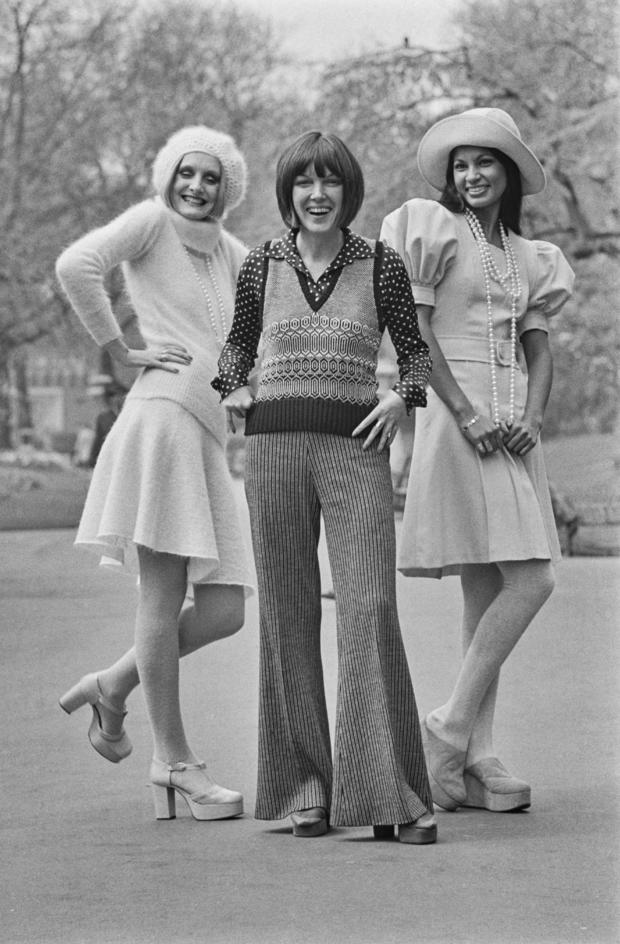British fashion designer Mary Quant, the style queen of Britain’s Swinging ’60s who popularized the miniskirt, died on Thursday at age 93, her family said.
Whether Quant actually invented the then-scandalously short skirts has long been disputed, with French designer Andre Courreges insisting he was first to raise hemlines high on the thigh.
But there is no doubt that without Quant the mini would not have become an icon of 1960s youth rebellion.
The diminutive designer — who always wore her hair in a bob — was also credited with creating hot pants, the skinny-rib sweater and waterproof mascara.
Britain’s Victoria and Albert design museum paid tribute to her “trailblazing vision”.
“It’s impossible to overstate Quant’s contribution to fashion,” it said on Twitter. “She represented the joyful freedom of 1960s fashion, and provided a new role model for young women.”
Alexandra Shulman, former editor-in-chief of British Vogue, described her as a “visionary.”
Quant was not just a “leader of fashion but also in female entrepreneurship, a visionary who was much more than a great haircut,” she said.
Born on Feb. 11, 1930, in London, Quant studied at Goldsmith’s College of art in the city where she met her future husband and business partner, Alexander Plunket Greene. He died in 1990.
Together they opened their first boutique, Bazaar, in 1955 in Chelsea, which would become the beating heart of Swinging London.
Bazaar sold clothes and accessories and its basement restaurant became a meeting point for young people and artists.
The whole Chelsea district was soon attracting celebrities such as the actors Brigitte Bardot and Audrey Hepburn and pop stars like the Beatles and the Rolling Stones.
Quant raised the hemline well above the knee, creating short dresses and skirts with simple shapes and strong colors that she described as “arrogant, aggressive and sexy.”
“Good taste is death, vulgarity is life,” she told The Guardian.
Her models were showcased in provocative window displays overlooking the King’s Road, which became a miniskirt catwalk and drew American photographers keen to picture Swinging London.
“City gents in bowler hats beat on our shop window with their umbrellas shouting ‘Immoral!’ and ‘Disgusting!’ at the sight of our miniskirts over the tights, but customers poured in to buy,” she recalled in her 1966 book “Quant by Quant.”
The designer was also widely quoted as saying that “it was the girls on the King’s Road who invented the mini … I wore them very short and the customers would say, ‘Shorter, shorter.'”
The era’s most high-profile model Lesley Lawson, better known as Twiggy, made the miniskirt popular abroad and with business booming, Quant opened a second shop in London in 1957.
She explored geometric designs, polka dots and contrasting colors, and played with new fabrics, including PVC and stretch fabrics, to achieve a modern and playful look.
She entered the American market in the early 1960s, collaborating with department store JC Penney. She also created the cheaper Ginger Group line and went into cosmetics, all her designs featuring a trademark daisy.
Quant also scandalized British society with her frank views on sex, making headlines when she famously said she had shaved her pubic hair into the shape of a heart and dyed it green.
Although her heyday was in the 1960s and 1970s, when she turned her sights on the Japanese market, Quant’s legacy can still be seen on the high street, with its high fashion at low prices.
She sold her make-up company to a Japanese group in 2000, staying on as consultant.
Alongside making it in America, Quant considered being knighted in 2015 her greatest achievement and called Queen Elizabeth II, who made her a dame, “the wisest woman I’ve ever met”.
Asked by The Guardian in 2016 what she would change if she could edit her past, Quant replied: “Not much, I’ve had a lovely time.”




